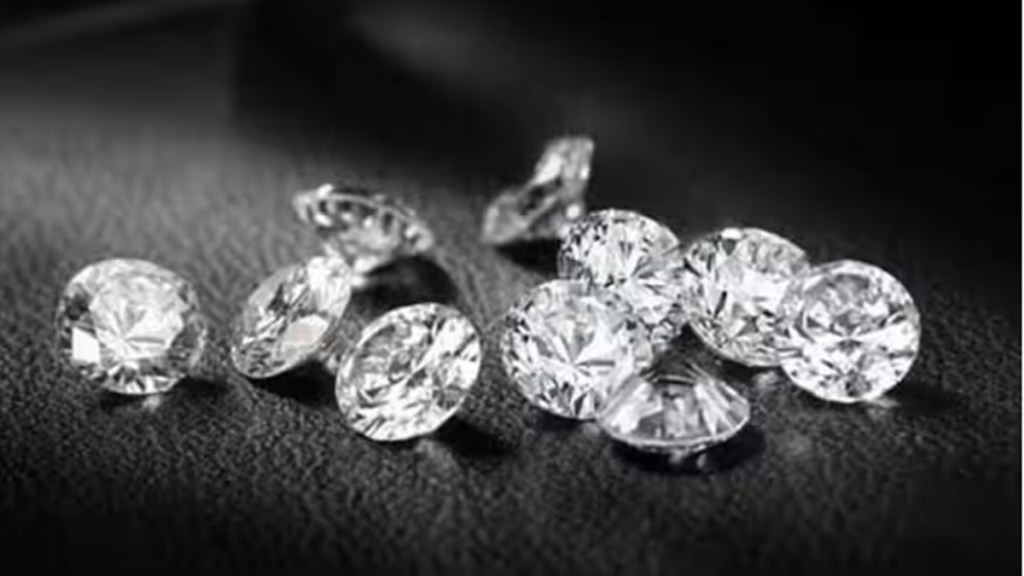In a move aimed at neutralizing the impact of reduced demand from key markets like the US and the European Union in the wake of fears that diamonds originating from Russia may be banned, the Indian diamond industry is all set to shift its focus to domestic markets and new emerging markets in ASEAN countries in a bid to unlock their untapped demand.
Vipul Shah, Chairman, Gem and Jewellery Export Promotion Council, told FE, “The outcome of the ongoing discussions on future prospects of the diamond business involving diamonds originating from Russia, is unclear at the moment. The intentions of the western countries that they do not want to finance the Russian diamond business are clear. The government and industry are trying to work out the modalities of a fool-proof method of assessing the traceability of diamonds.”
He further added, “Also, there is still a prevailing uncertainty on whether or not a ban will be imposed by the US and other developed economies. If and when this happens, we are preparing ourselves to switch focus to new and emerging markets including ASEAN countries, Vietnam and Cambodia. In the recently concluded India International Jewellery Show, we had participation of 2,100 buyers from 69 countries and business worth more than Rs 50,000 crore was transacted during this exhibition.”
“The current demand from the US and Chinese markets is lower than the usual demand from these markets. But the encouraging responsefrom other countries to our international exhibition in held in Goregaon in Mumbai recently, indicates that these are markets with high potential”, added Shah.
According to reports, in 2019, worldwide production for diamonds stood at 142 million carats amounting to $ 13.9 billion, while the value after grading, cutting and polishing was at $ 29.7 billion. The global jewellery market is currently valued at $ 79 billion.
Amit Pratihari, VP, De Beers Forevermark, one of the top three leading diamond producer companies in the world, said, “The international diamond market is being affected by the inflationary tendencies and geo-political disturbances across the world. However, this is not a cause of concern for us as the Indian market is our main focus. De Beers believes that the Indian diamond market is positioned at a sweet spot. De Beers Forevermark business has been growing at a steady pace over the years ranging from 10% – 20% growth, since 2018.”
He said, “The upcoming festival season is expected to see good demand because the Indian diamond market is unique in many ways. For instance, here diamond is perceived as a luxury product and an investment option. Jewellery is part of Indian culture and diamond jewellery has still not attained its potential penetration level. India has a huge untapped demand for diamond jewelleries and De Beers is focusing on this.”
Commenting on the ongoing debate on the traceability of a diamond, Pratihari said, “Consumers are becoming sensitive to the origins of the products that they consume. And diamond is no exception to that. With this in mind, we at De Beers have an ‘origin Program’. This program ensures that the diamonds are sold with their origin certificate. The origin of each and every De Beers diamond can be traced to the mining country from where it has been mined. Advanced technologies are making it easier to trace the origin of a diamond.”
It may be mentioned that De Beers (Luxembourg), Alrosa (Russia) and Rio Tinto (British-Australian) are the top three diamond producers in the world. These three account for more than 60% of the global diamond production. Russia has the highest diamond reserves. In the year 2022, Russian diamond production touched 41.92 million carats with Botswana and Canada ranking second and third with 24.5 million carats and 16.3 million carats respectively. The market value for Russian diamond production in 2022, has been estimated at $ 3.55 billion while the market value of Botswana’s production is $ 4.7 billion.
